Charles Dickens may have written “It was the best of times, it was the worst of times” about the beginning of French Revolution but it applied just as well to Packard in 1934. The cars were wonderful, offered in a profusion of models, body styles and optional accessories, but the Great Depression was at its deepest and even Packard’s elite clientele was not buying. It was cold comfort when Packard finished the year with 42.7% of the luxury car market. Cadillac and Lincoln were even worse off. Marmon and Peerless had called it quits in 1933. Pierce-Arrow was well on its way to going out of business. In the 1934 luxury market Packard’s accomplishment was truly remarkable, but it amounted to only 8,000 cars and they were spread out over three different engines and five different chassis. In addition to the inherent quality, luxury, performance and silence for which Packard was justly famous the marque’s design and styling combined conservative elegance with a hint of sporting flair. Raymond Dietrich had laid down the basic lines of Packard’s cataloged and custom bodies while working for Murray Corporation subsidiary Dietrich, Inc. in the late Twenties. Ray Dietrich’s concepts were embraced by Ed Macauley, appointed Packard’s styling director in 1932 by his father Alvan Macauley, Packard’s President. Alexis de Sakhnoffsky joined Packard as a part-time consultant through the early Thirties, contributing his own sense of form, flow and streamlining to the development of Packard coachwork, work which was implemented with talent and skill by Werner Gubitz. While the few remaining independent coachbuilders continued to body Packard chassis, the economy and Packard’s extensive catalog of finely-styled designs kept most Packard coachwork production in Packard’s own facilities. That was, as it turns out, a serendipitous consequence as the Packard coachwork of the early Thirties, and particularly 1934, is among the best of the period. Relying on Packard’s traditional buttressed grille shell, since 1932 vee-shaped with vertical blinds, complemented by veed headlight lenses and the “down-tick” dart-shaped shoulder molding created by Hibbard & Darrin, Packard cataloged no less than thirteen standard bodies on the prestigious 1104 Super Eight alone. Deliveries of closed sedans predominated but it is the few, very special, open 1934 Packards that are most appreciated today. The essence of classic design and quality, their appeal is timeless. This 1934 Packard 1101 Standard Eight Coupe Roadster (Packard’s term for a rollup window convertible) is a great example of why among its peers Packard was so successful. It is a beautiful automobile. Finished in two shades of cream with burnt orange wheels and upholstered in tan leather with a tan cloth top, it has dual sidemounted spares with mirrors, wide whitewall tires, a rumble seat for two occasional passengers and a luggage rack. The wheels have decorative chrome plated lock rings. It was comprehensively restored some time ago and the paint appears to have been subsequently renewed. The interior is sound and usable while showing some use and age and the chrome brightwork is sound. The engine and chassis were properly and sympathetically restored to their original factory appearance and still look very good. This is a handsome example of one of the prettiest and best driving years from Packard, a car appreciated by both collectors and drivers as a high point in Packard design, evolution and construction.
Charles Dickens may have written “It was the best of times, it was the worst of times” about the beginning of French Revolution but it applied just as well to Packard in 1934. The cars were wonderful, offered in a profusion of models, body styles and optional accessories, but the Great Depression was at its deepest and even Packard’s elite clientele was not buying. It was cold comfort when Packard finished the year with 42.7% of the luxury car market. Cadillac and Lincoln were even worse off. Marmon and Peerless had called it quits in 1933. Pierce-Arrow was well on its way to going out of business. In the 1934 luxury market Packard’s accomplishment was truly remarkable, but it amounted to only 8,000 cars and they were spread out over three different engines and five different chassis. In addition to the inherent quality, luxury, performance and silence for which Packard was justly famous the marque’s design and styling combined conservative elegance with a hint of sporting flair. Raymond Dietrich had laid down the basic lines of Packard’s cataloged and custom bodies while working for Murray Corporation subsidiary Dietrich, Inc. in the late Twenties. Ray Dietrich’s concepts were embraced by Ed Macauley, appointed Packard’s styling director in 1932 by his father Alvan Macauley, Packard’s President. Alexis de Sakhnoffsky joined Packard as a part-time consultant through the early Thirties, contributing his own sense of form, flow and streamlining to the development of Packard coachwork, work which was implemented with talent and skill by Werner Gubitz. While the few remaining independent coachbuilders continued to body Packard chassis, the economy and Packard’s extensive catalog of finely-styled designs kept most Packard coachwork production in Packard’s own facilities. That was, as it turns out, a serendipitous consequence as the Packard coachwork of the early Thirties, and particularly 1934, is among the best of the period. Relying on Packard’s traditional buttressed grille shell, since 1932 vee-shaped with vertical blinds, complemented by veed headlight lenses and the “down-tick” dart-shaped shoulder molding created by Hibbard & Darrin, Packard cataloged no less than thirteen standard bodies on the prestigious 1104 Super Eight alone. Deliveries of closed sedans predominated but it is the few, very special, open 1934 Packards that are most appreciated today. The essence of classic design and quality, their appeal is timeless. This 1934 Packard 1101 Standard Eight Coupe Roadster (Packard’s term for a rollup window convertible) is a great example of why among its peers Packard was so successful. It is a beautiful automobile. Finished in two shades of cream with burnt orange wheels and upholstered in tan leather with a tan cloth top, it has dual sidemounted spares with mirrors, wide whitewall tires, a rumble seat for two occasional passengers and a luggage rack. The wheels have decorative chrome plated lock rings. It was comprehensively restored some time ago and the paint appears to have been subsequently renewed. The interior is sound and usable while showing some use and age and the chrome brightwork is sound. The engine and chassis were properly and sympathetically restored to their original factory appearance and still look very good. This is a handsome example of one of the prettiest and best driving years from Packard, a car appreciated by both collectors and drivers as a high point in Packard design, evolution and construction.
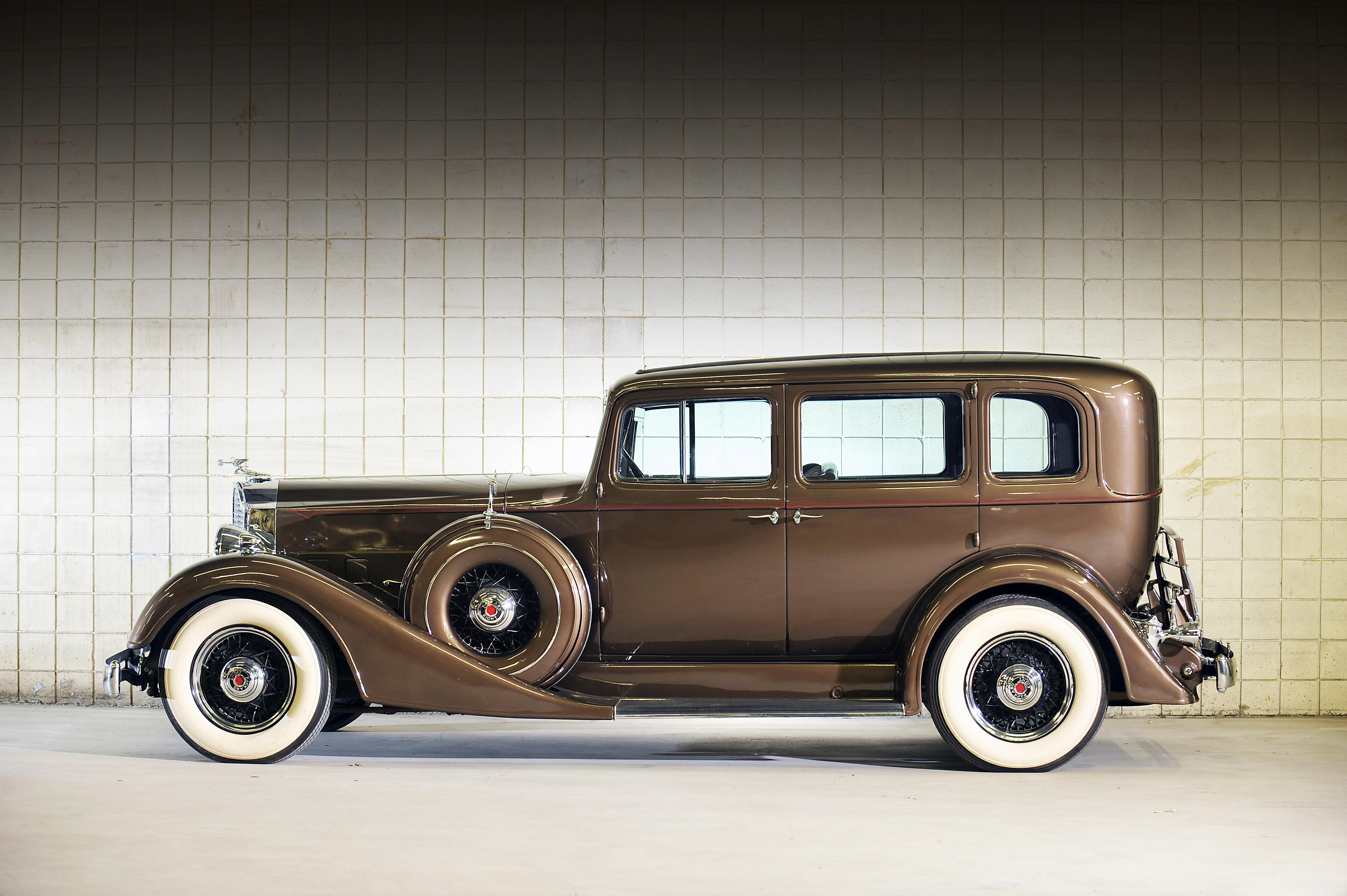

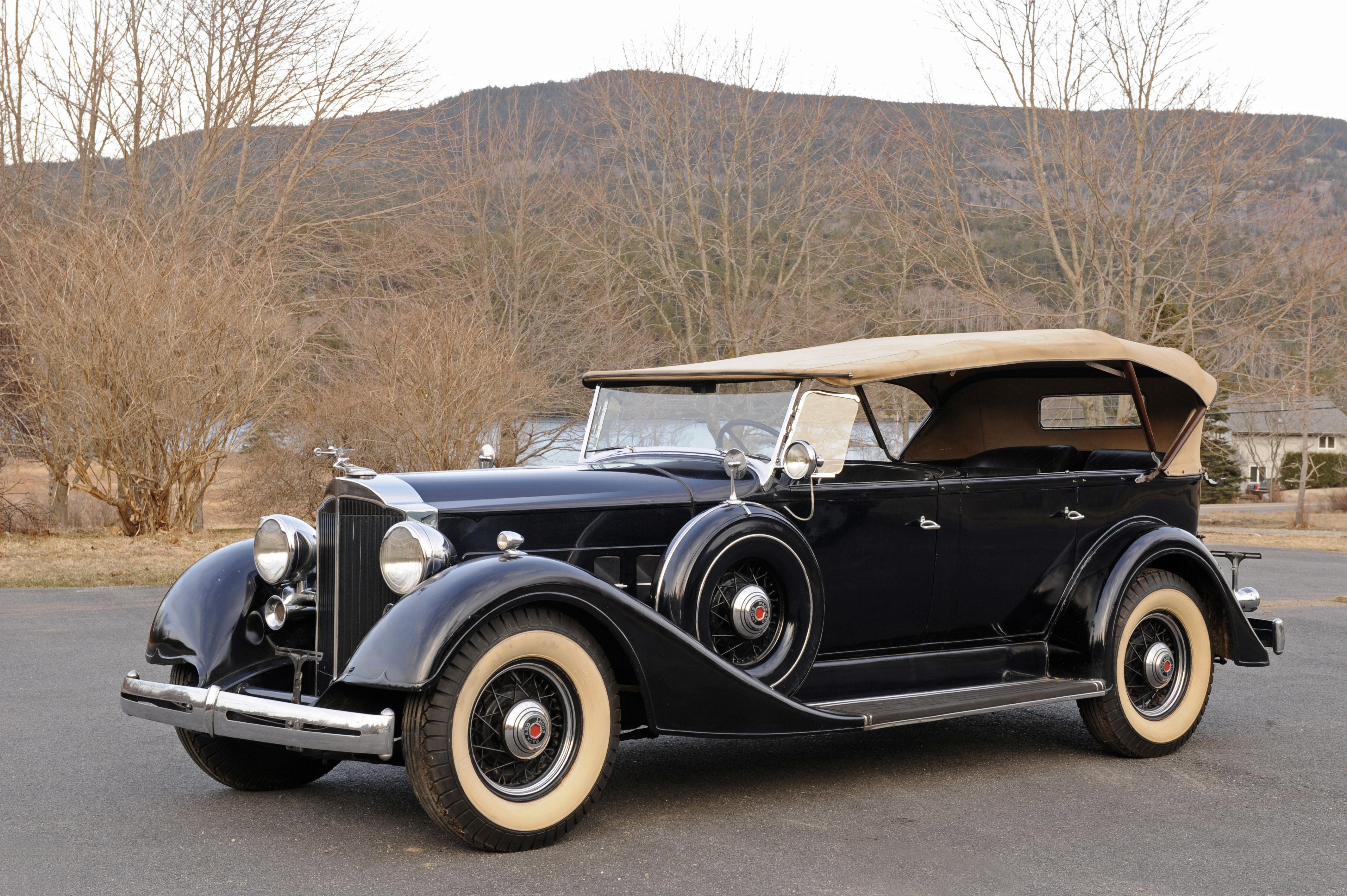
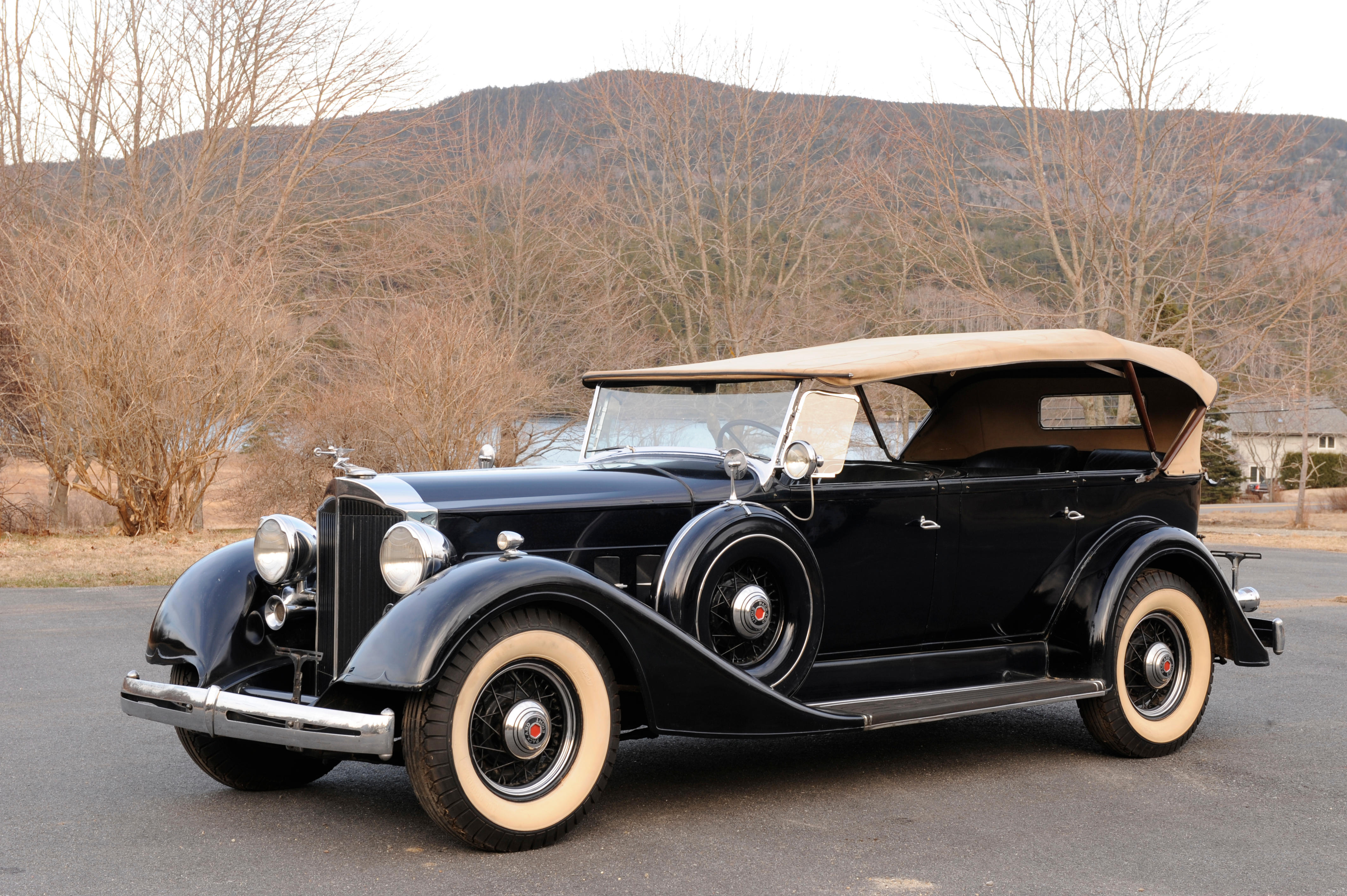
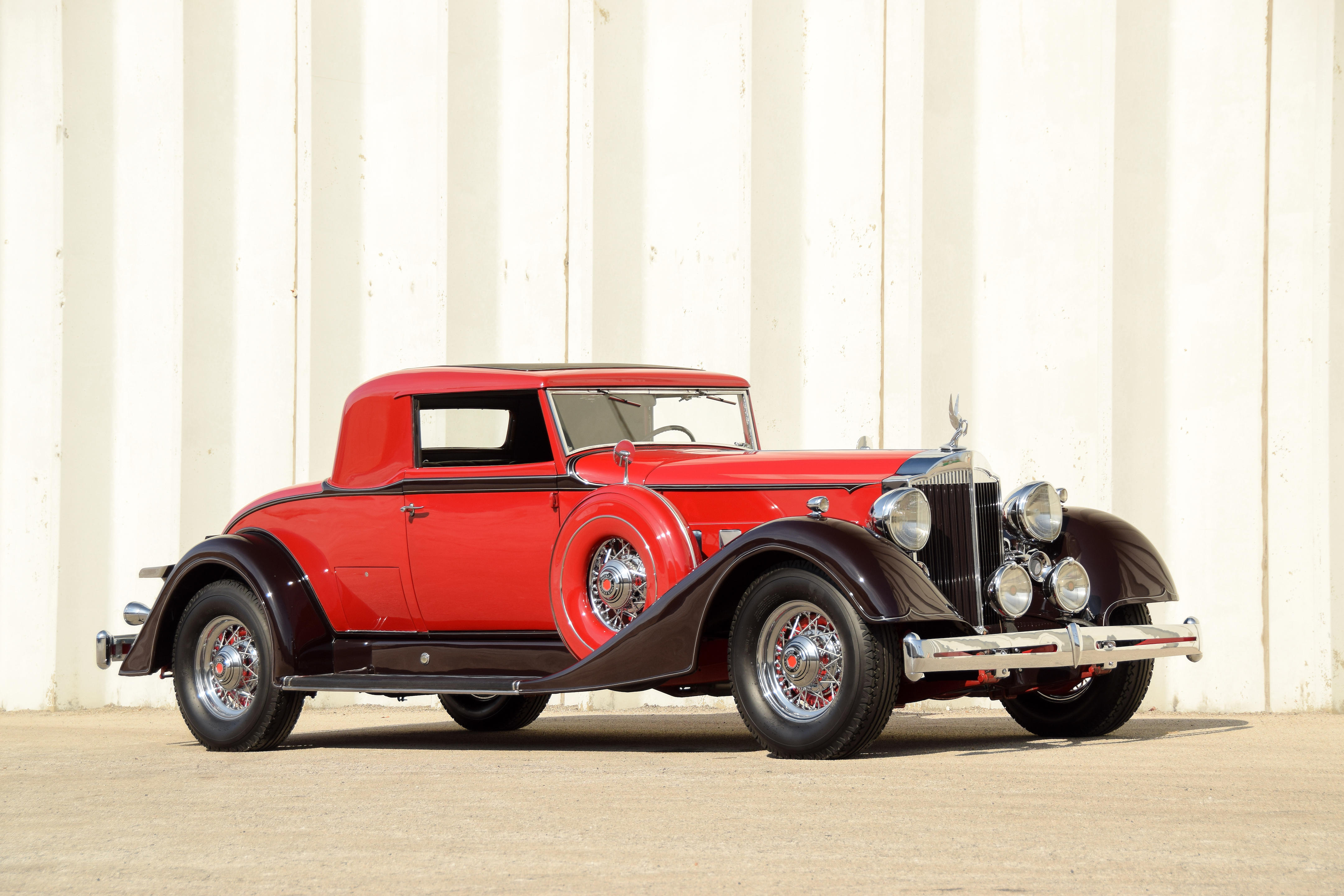
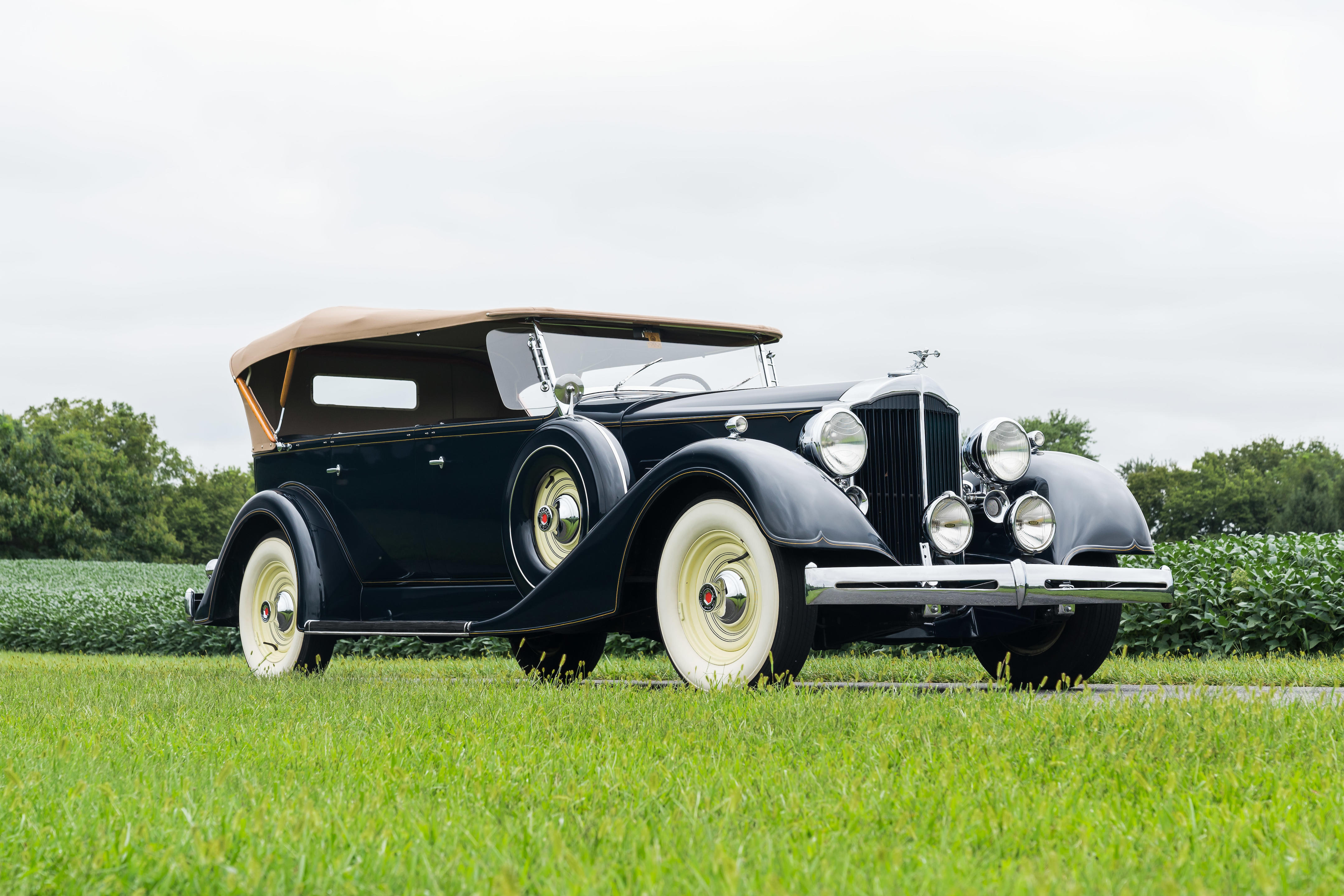
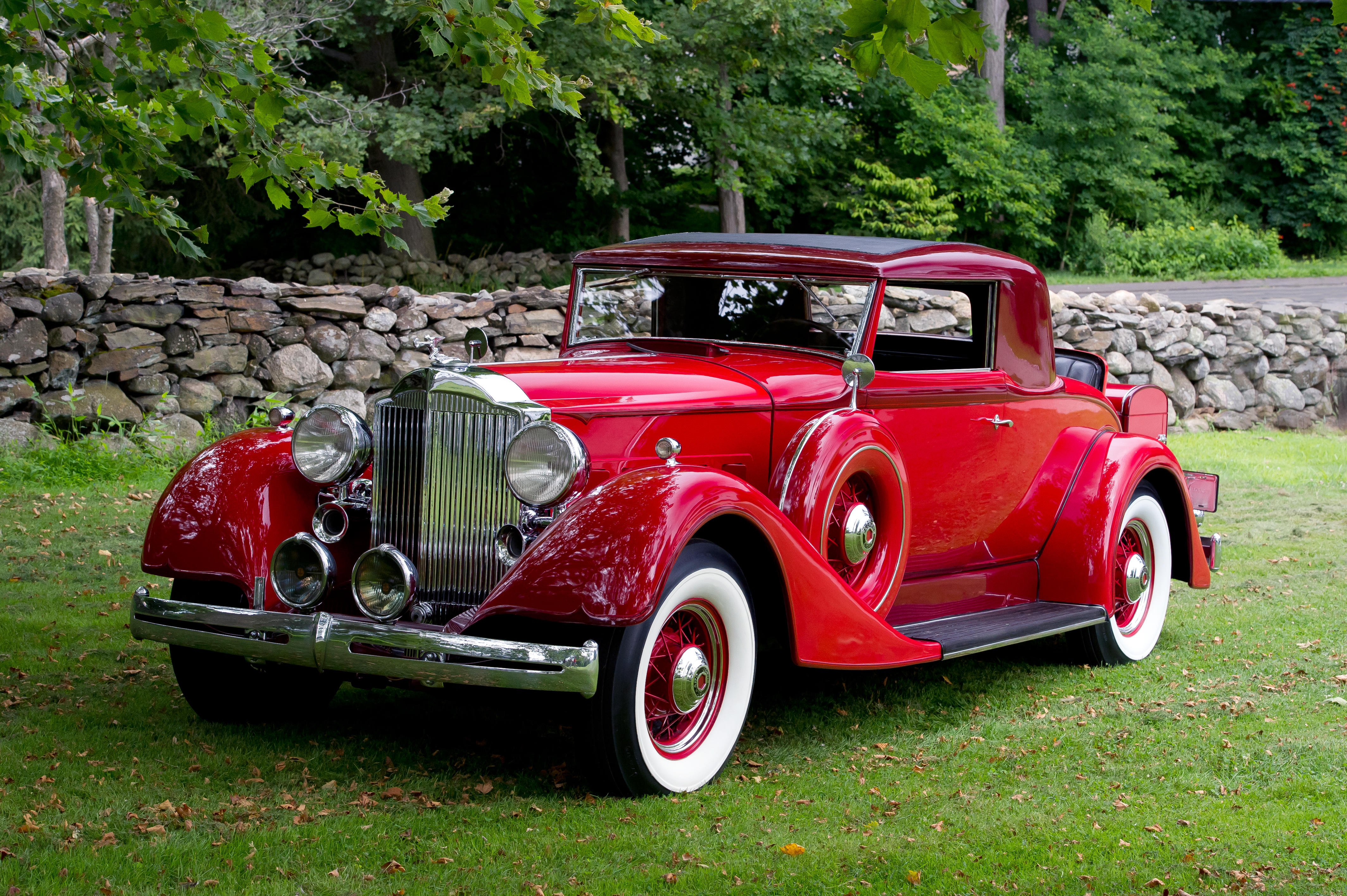
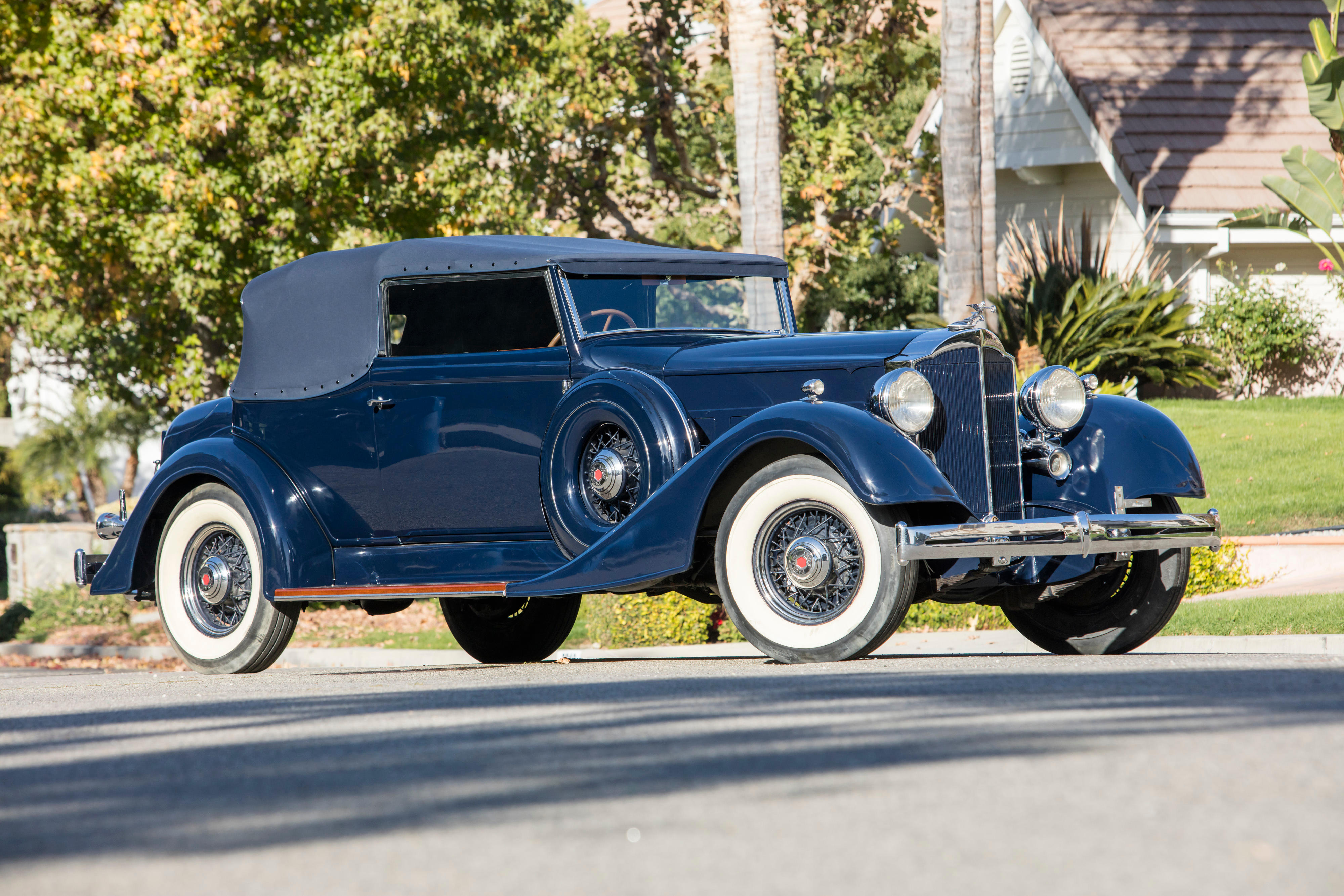

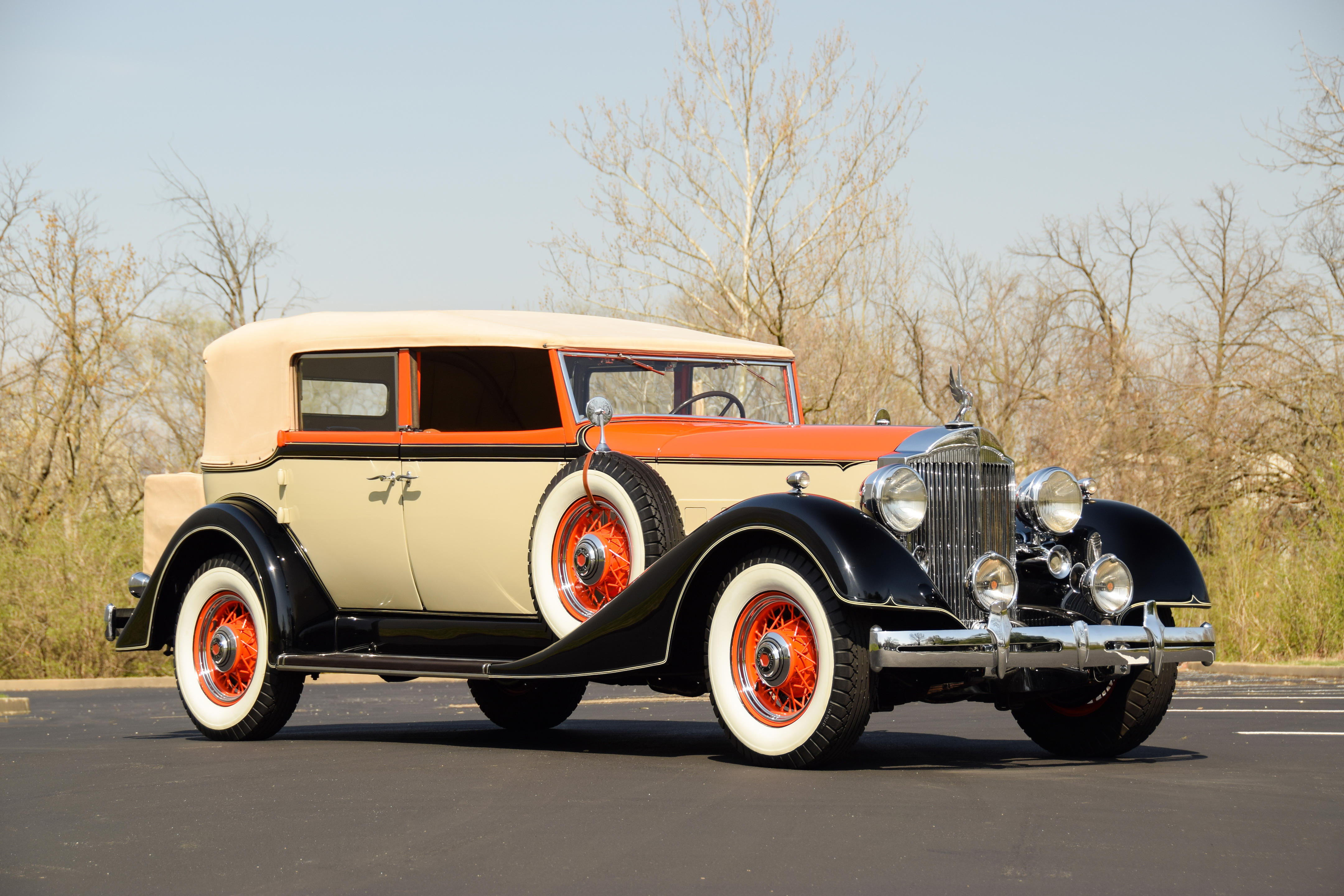
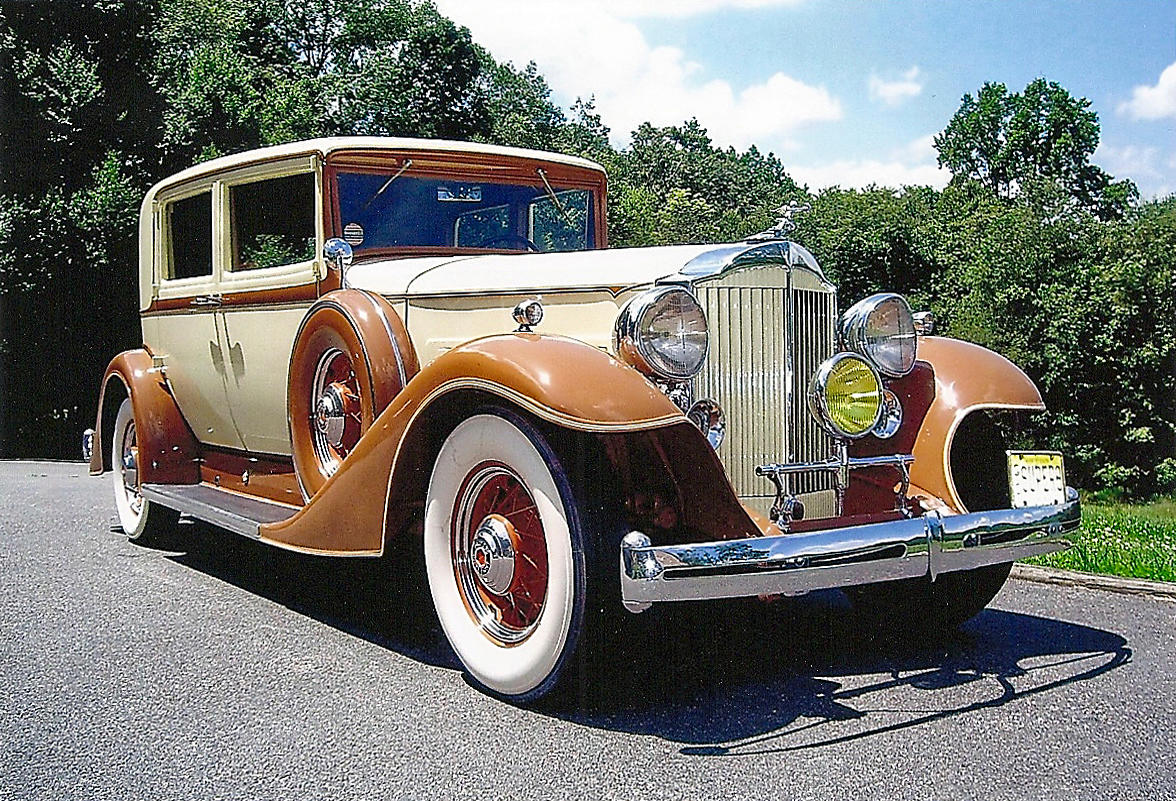

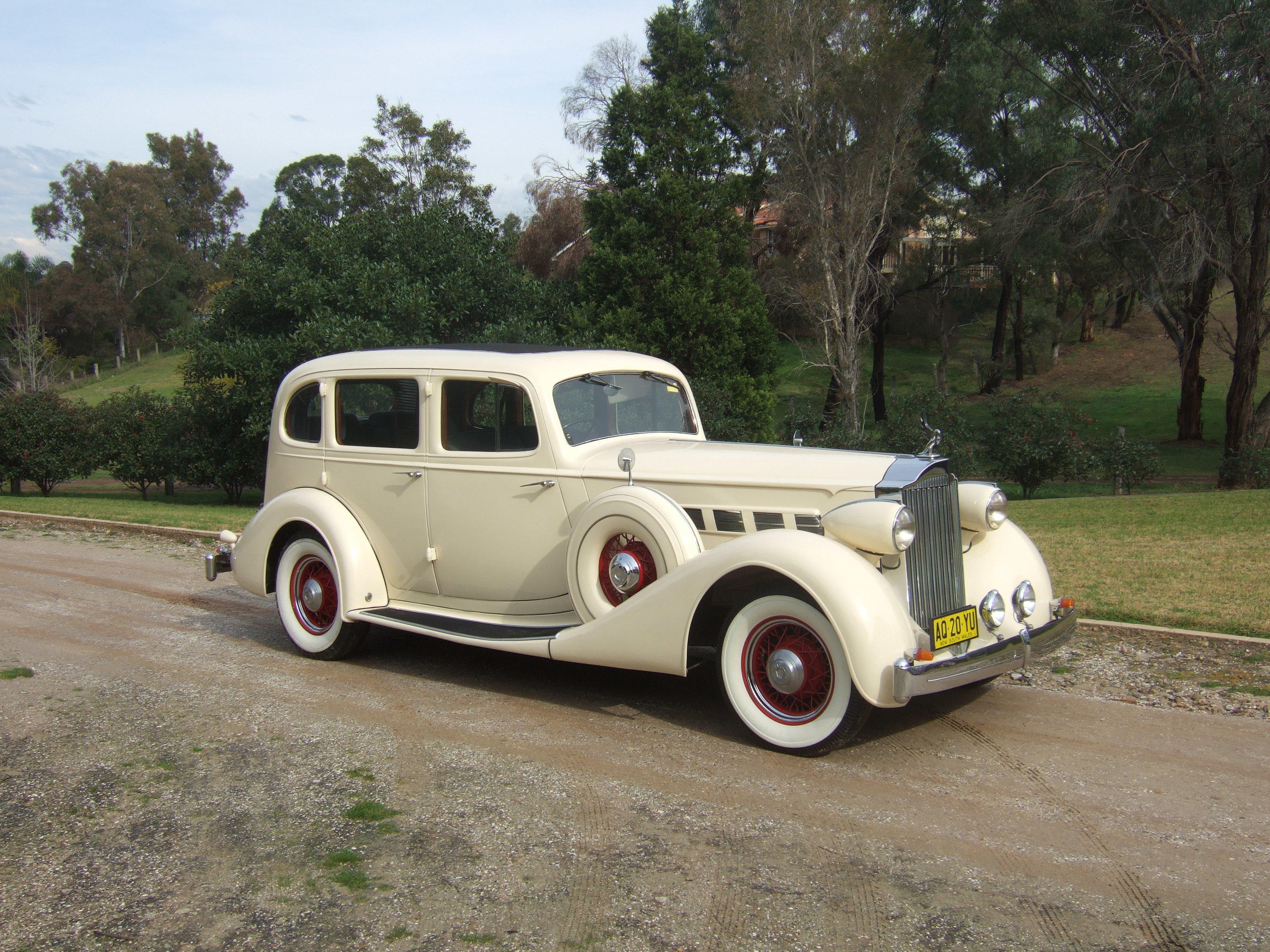

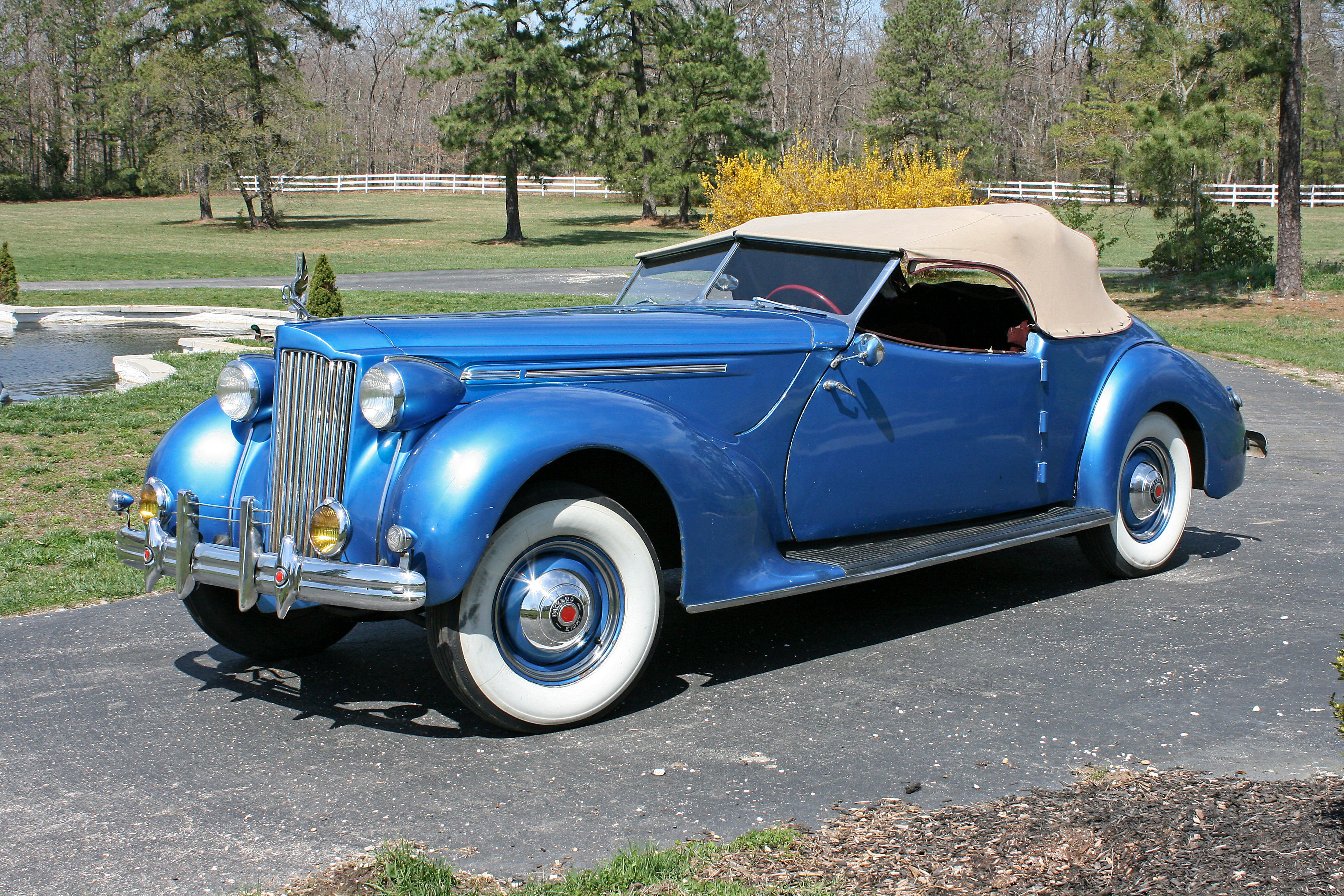
Testen Sie LotSearch und seine Premium-Features 7 Tage - ohne Kosten!
Lassen Sie sich automatisch über neue Objekte in kommenden Auktionen benachrichtigen.
Suchauftrag anlegen